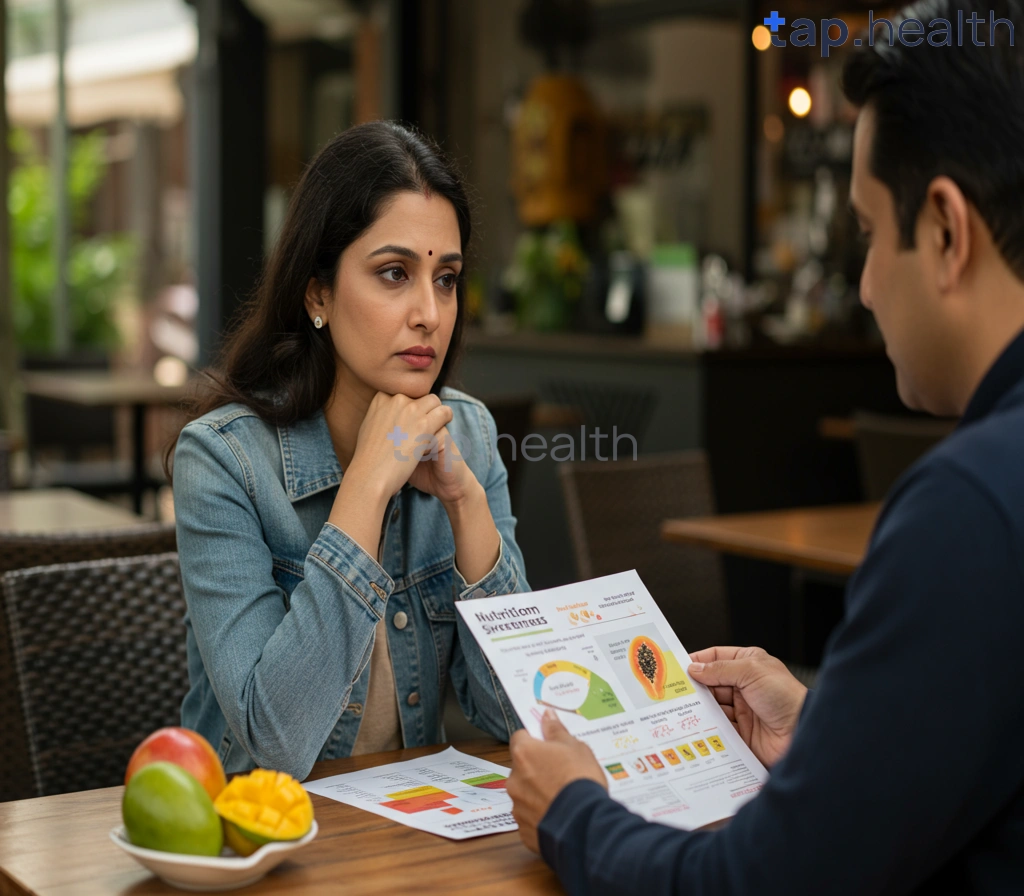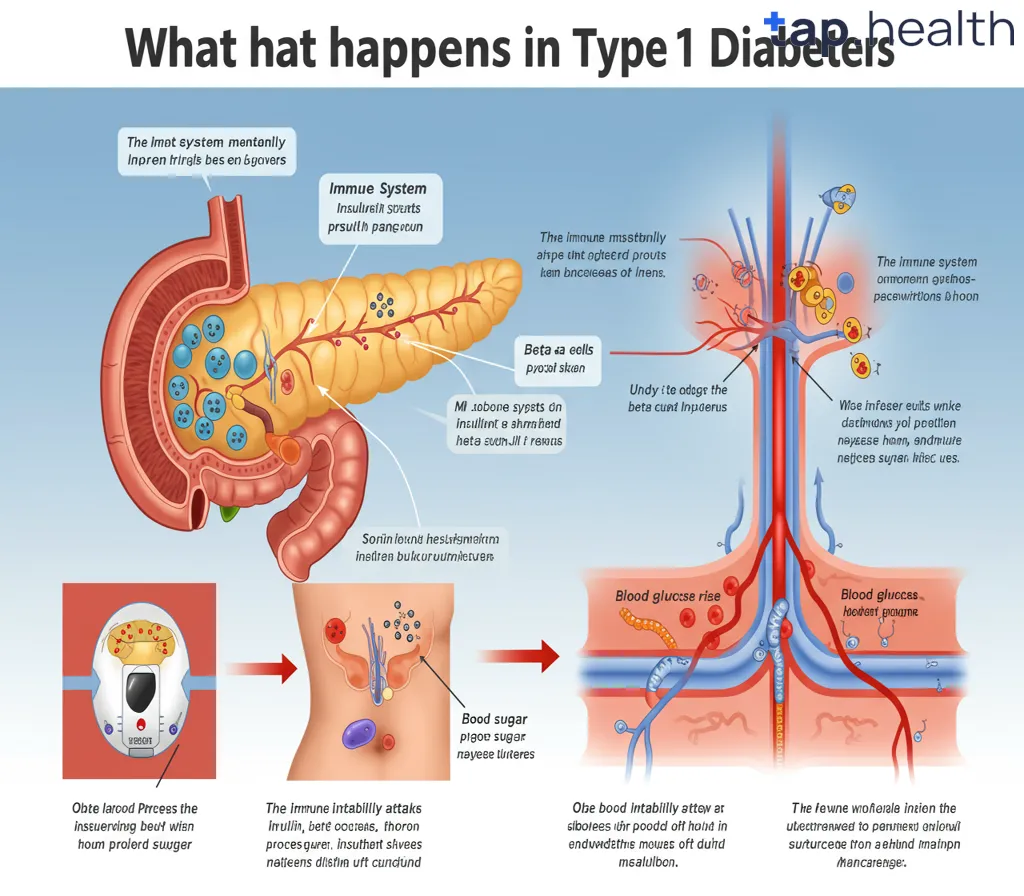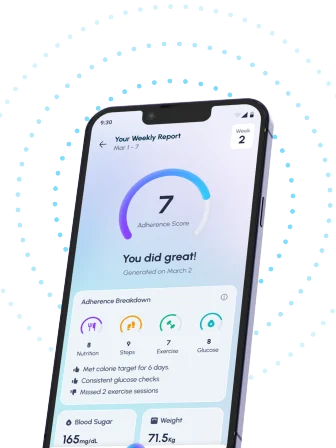Table of Contents
- Artificial Sweeteners: Impact on Blood Sugar Levels
- Understanding Blood Sugar Response to Sweeteners
- Sugar Substitutes vs. Sugar: A Blood Sugar Comparison Guide
- How Artificial Sweeteners Affect Your Blood Glucose
- Managing Blood Sugar: The Role of Sweeteners
- Frequently Asked Questions
- References
Are you trying to cut back on sugar but unsure about the best alternatives? Many people turn to artificial sweeteners, believing they’re a guilt-free way to satisfy their sweet tooth. But are these sugar substitutes truly harmless? This blog post dives into the complex relationship between artificial sweeteners and blood sugar, exploring the science behind how they affect your body and helping you make informed choices. We’ll uncover the facts you need to know to navigate the world of sugar substitutes and understand their impact on your health. Let’s get started and separate fact from fiction!
Artificial Sweeteners: Impact on Blood Sugar Levels
Understanding the Sweetener-Blood Sugar Relationship
We Indians, with our love for sweets, often consume far more sugar than the WHO recommends – a whopping 25 grams (6 teaspoons) daily! This makes understanding artificial sweeteners crucial. While they boast zero or minimal calories and carbs, their effect on blood sugar is surprisingly complicated. It’s not a simple on/off switch.
Artificial Sweeteners & Metabolic Effects
Unlike table sugar, artificial sweeteners don’t directly spike your blood glucose. However, consistent use might indirectly mess with blood sugar control. Emerging research hints at links between artificial sweeteners and gut bacteria imbalances, insulin resistance, and even increased cravings for sugary treats. This is especially relevant in Indian diets, often rich in carbohydrates. These factors, over time, could contribute to metabolic problems.
Regional Considerations in India and Tropical Countries
Luckily, many Indian and tropical regions are brimming with naturally sweet fruits – mangoes, papayas, bananas – offering delicious sweetness and essential vitamins. These are nature’s perfect alternatives to artificial sweetness. The real goal isn’t demonizing artificial sweeteners, but reducing overall sugar intake. That means both natural and artificial sources.
Actionable Steps for Better Blood Sugar Control
- Prioritize whole foods: Think lentils, vegetables, and whole grains.
- Cut back on sugary drinks & artificial sweeteners: Small changes make a big difference!
- Seek expert advice: Chat with your doctor or a registered dietitian for personalized guidance, especially if you have diabetes or metabolic syndrome.
Maintaining healthy blood sugar levels isn’t just about avoiding spikes; it’s about long-term well-being. For additional strategies, explore fermented foods’ role in blood sugar regulation.
Understanding Blood Sugar Response to Sweeteners
The Sweet Truth About Artificial Sweeteners in Tropical Climates
Artificial sweeteners are everywhere in India and other tropical countries, often touted as a healthier swap for sugar. But how really do they affect your blood sugar? This is a crucial question, especially with diabetes rates rising. While they don’t directly spike blood glucose like sugar does, the story’s more complex. Some research suggests they might indirectly influence blood sugar control—maybe by tweaking gut bacteria or impacting how your body uses insulin. Think of it like this: they might not be the direct cause of a problem, but they could be contributing to a less-than-ideal environment.
Individual Responses and Regional Diets
The impact of artificial sweeteners varies wildly from person to person. Your existing metabolic health, your overall diet, and even your genes play a role. The high-carb nature of many traditional Indian and tropical diets adds another layer. Even a small amount of artificial sweetener alongside a carb-heavy meal could still lead to a blood sugar rise, albeit smaller than with sugar. Regular blood glucose monitoring is key, especially if you have prediabetes (140–199 mg/dL) or diabetes (200 mg/dL or higher). Knowing what a normal blood sugar level after eating looks like is essential for managing your health.
Making Informed Choices
The bottom line? Artificial sweeteners aren’t a magic bullet for weight loss or blood sugar control. A balanced diet, regular exercise, and mindful eating are still crucial. For people in India and tropical regions, prioritizing whole foods with naturally occurring sugars and balanced meals is often the best approach. It’s always a good idea to chat with your doctor or a registered dietitian for personalized advice. They can help you navigate the complexities of your regional diet and individual needs. And, exploring the connection between weight loss and blood sugar levels offers valuable insight into overall health.
Sugar Substitutes vs. Sugar: A Blood Sugar Comparison Guide
Understanding the Impact on Blood Sugar
In India, and across many tropical nations, sugar consumption is sky-high – a staggering 20 kg per person annually in India! This high intake significantly boosts the risk of diabetes, a condition affecting millions. That’s why understanding how different sweeteners affect blood sugar is so crucial, especially for those managing diabetes or aiming to prevent it. Think of it this way: natural sugars like sucrose (table sugar) and fructose (fruit sugar) act like a rocket booster for blood glucose, while artificial sweeteners like aspartame, sucralose, and stevia are more like a gentle nudge. The difference is significant.
Comparing Glycemic Index (GI) and Glycemic Load (GL)
To compare, we need to look at the Glycemic Index (GI) and Glycemic Load (GL). The GI shows how quickly a carb raises blood sugar; imagine it as a speedometer. The GL considers both speed (GI) and the amount of carbs; think of it as the total distance traveled. Sugar has a high GI and GL – a fast, long journey for your blood sugar. Many artificial sweeteners have a GI and GL of zero or near-zero, meaning minimal impact. This makes them a smart choice for blood sugar management. For a deeper dive into what constitutes normal blood sugar levels, check out this helpful resource: Is a 75 Sugar Level Normal? Blood Sugar Levels in Detail.
Making Informed Choices for Better Health
Choosing wisely can make a real difference, especially in high-sugar regions. While artificial sweeteners provide a lower-impact alternative, remember moderation is key. Always check food labels, be mindful of your overall diet, and – this is important – talk to a doctor or registered dietitian. They can offer personalized advice tailored to your needs and risk for diabetes. If you’re exploring natural ways to manage blood sugar, this guide might be helpful: Top 8 Natural Remedies to Improve Blood Sugar Levels.
How Artificial Sweeteners Affect Your Blood Glucose
Artificial sweeteners are everywhere, especially in India and other tropical countries, sneaking into countless packaged foods and drinks. While marketed as the “guilt-free” option, their effect on blood sugar isn’t so simple. This is especially important because sugary drinks alone increase your diabetes risk by 26% – a serious concern in regions with high diabetes rates.
The Complex Relationship
Unlike sugar, artificial sweeteners don’t directly spike your blood glucose. They lack the carbohydrates that break down into glucose. But the story’s more complicated than that. Emerging research suggests they might mess with your gut bacteria (your gut microbiota), potentially impacting insulin sensitivity and long-term blood sugar control. This indirect effect is a big deal, particularly if you’re already at risk for diabetes or managing the condition. Think of it like this: it’s not the sweetener itself directly causing the problem, but it might be altering the environment within your body that affects how you process sugar. Consider exploring alternatives, like the questions surrounding brown sugar and diabetes: Is Brown Sugar Good for Diabetics?
Potential Implications in Tropical Climates
The intense heat and humidity of many tropical regions might make things even trickier. Dehydration, common in these climates, can throw off your metabolism, possibly changing how your body handles artificial sweeteners. We need more research on this specific link. Plus, constantly reaching for artificially sweetened drinks instead of water could derail your hydration efforts, which is a problem in itself. And let’s not forget the hidden sugars lurking in processed foods – another big blood sugar disruptor. Learning to spot them is crucial: How to Identify and Avoid Hidden Sugars in Processed Foods.
Making Informed Choices
So, what’s the takeaway for people in India and other tropical countries? Moderation is key. Prioritize natural sweeteners sparingly and focus on a balanced diet bursting with fruits and vegetables. If you have any worries about your blood sugar or diabetes risk, chat with your doctor or a registered dietitian. They can offer personalized advice. Ultimately, choosing whole, unprocessed foods and limiting processed items – regardless of sweetness – is vital for long-term health.
Managing Blood Sugar: The Role of Sweeteners
Understanding the Impact of Artificial Sweeteners
Keeping your blood sugar in check is vital, especially in places like India where delicious, carb-heavy meals are a big part of life. Ideally, your blood sugar should be between 80–130 mg/dL before meals and under 180 mg/dL after. Artificial sweeteners, often touted as the “healthy” swap for sugar, are a bit more complicated. They don’t directly spike your glucose like sugar does, but their long-term effects on your body are still being researched. Some studies hint at a link between these sweeteners and increased cravings, weight gain, and even changes in your gut bacteria – all things that can indirectly affect blood sugar control.
Navigating Sweetener Choices in Tropical Diets
In India and other tropical countries, where naturally sweet fruits and traditional sweets are beloved, understanding the difference between natural and artificial sweeteners is crucial. Many drinks and processed foods use artificial sweeteners. While they seem like a low-calorie win, they can sometimes backfire, leaving you craving even more sugar, making blood sugar management tougher. For help with those pesky morning blood sugar spikes, check out our article on Why Blood Sugar Spikes in the Morning and How to Manage Them.
Practical Tips for Blood Sugar Management
Focus on whole, unprocessed foods and use natural sweeteners sparingly. If you do use artificial sweeteners, be mindful of how much you’re using and choose those with fewer potential side effects. It’s always best to chat with a doctor or registered dietitian for personalized advice. Remember, managing blood sugar isn’t just about sweeteners; it’s about a balanced diet and regular exercise. Getting expert advice tailored to your lifestyle and region is key. Learn how to adapt your favorite traditional dishes for better blood sugar control with our guide: Adapting Traditional Cuisines for Better Blood Sugar Control.
Frequently Asked Questions on Artificial Sweeteners and Blood Sugar
Q1. How do artificial sweeteners affect my blood sugar levels?
Artificial sweeteners don’t directly raise blood glucose like sugar does because they lack carbohydrates. However, research suggests potential indirect effects, such as influencing gut bacteria, insulin sensitivity, and potentially increasing sugar cravings, which could impact long-term blood sugar control.
Q2. Are artificial sweeteners a safe alternative to sugar, especially in a high-carb diet like many Indian diets?
While artificial sweeteners offer a lower-calorie and lower-glycemic alternative to sugar, they aren’t a magic bullet. Their long-term effects are still being studied, and their impact might vary depending on individual metabolism and overall diet. A balanced diet with whole foods remains crucial, even when using artificial sweeteners.
Q3. What are the potential downsides of regularly using artificial sweeteners?
Potential downsides include possible disruption of gut bacteria balance, impacting insulin sensitivity and potentially increasing cravings for sugary foods. These indirect effects could contribute to metabolic issues over time. More research is needed to fully understand the long-term consequences.
Q4. How can I manage my blood sugar effectively while enjoying traditional Indian sweets and meals?
Prioritize whole foods like lentils, vegetables, and whole grains. Reduce overall sugar intake, including both natural and artificial sources. Use natural sweeteners sparingly and opt for balanced meals. Consult a doctor or registered dietitian for personalized guidance, particularly if you have diabetes or metabolic syndrome.
Q5. Where can I find more information and support for managing my blood sugar levels?
Consult your doctor or a registered dietitian for personalized advice tailored to your dietary needs and health conditions. They can help you create a balanced meal plan and address any concerns related to artificial sweeteners and blood sugar management.
References
- Understanding Type 2 Diabetes: https://professional.diabetes.org/sites/default/files/media/ada-factsheet-understandingdiabetes.pdf
- What is Diabetes: https://www.medschool.lsuhsc.edu/genetics/docs/DIABETES.pdf




